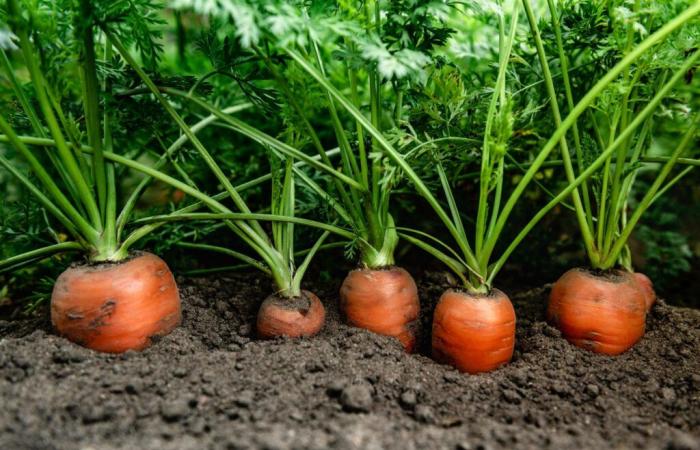Just because winter is approaching doesn’t mean you have to abandon your vegetable garden. In fact, certain varieties of vegetables resist cold very well and can be planted or sown now for future harvests. Discover the plants suitable for the month of November and how to properly maintain them.
With dropping temperatures, more frequent rain and shorter days, many gardeners are hesitant to plant this season. However, winter offers great possibilities. Growing certain vegetables not only enriches your crops, but also protects the soil from erosion by keeping it covered. Here’s what’s still time to sow and plant in November.
Garlic
White and purple garlic, which is planted between October and November, perfectly resists the rigors of winter. These autumn varieties, robust against the cold, adapt well outdoors. According to Garden and Vegetable Gardenprefer well-drained and sunny soil for good development.
The salad
Not all salads are cold-resistant, but lamb’s lettuce and winter lettuces are particularly suitable. From mid-November, they can be transplanted. For greater security, An organic garden recommends growing them under cover, in a greenhouse, or protected by a winter cover.
Shallot
Shallots can be planted as early as October and until November, although they tolerate planting in December. They prefer light, well-drained soil. To encourage their growth, space the bulbs 12 to 20 cm apart and leave approximately 25 to 40 cm between each row.
The carrot
In November, carrots can be sown in open ground, provided they are protected under a frame or tunnel to avoid frost. Place the rows 15-25 cm apart. You can start harvesting from March.
The bean
Beans thrive in cool climates, making them ideal for fall growing under cover or outdoors in regions with mild winters. Green Range highlights their simplicity of cultivation, requiring little watering during the cold season. Allow a spacing of 30 to 40 cm between each row.
White onion
White onions are planted between October and mid-November. To encourage moisture evacuation, plant them on mounds to facilitate natural drainage. Space them 5 to 10 cm apart. Winter humidity will be sufficient for their water supply, so little watering will be necessary.
By planting these vegetables as early as November, you are preparing for great harvests for late winter and early spring, while keeping your soil healthy during the colder months!






